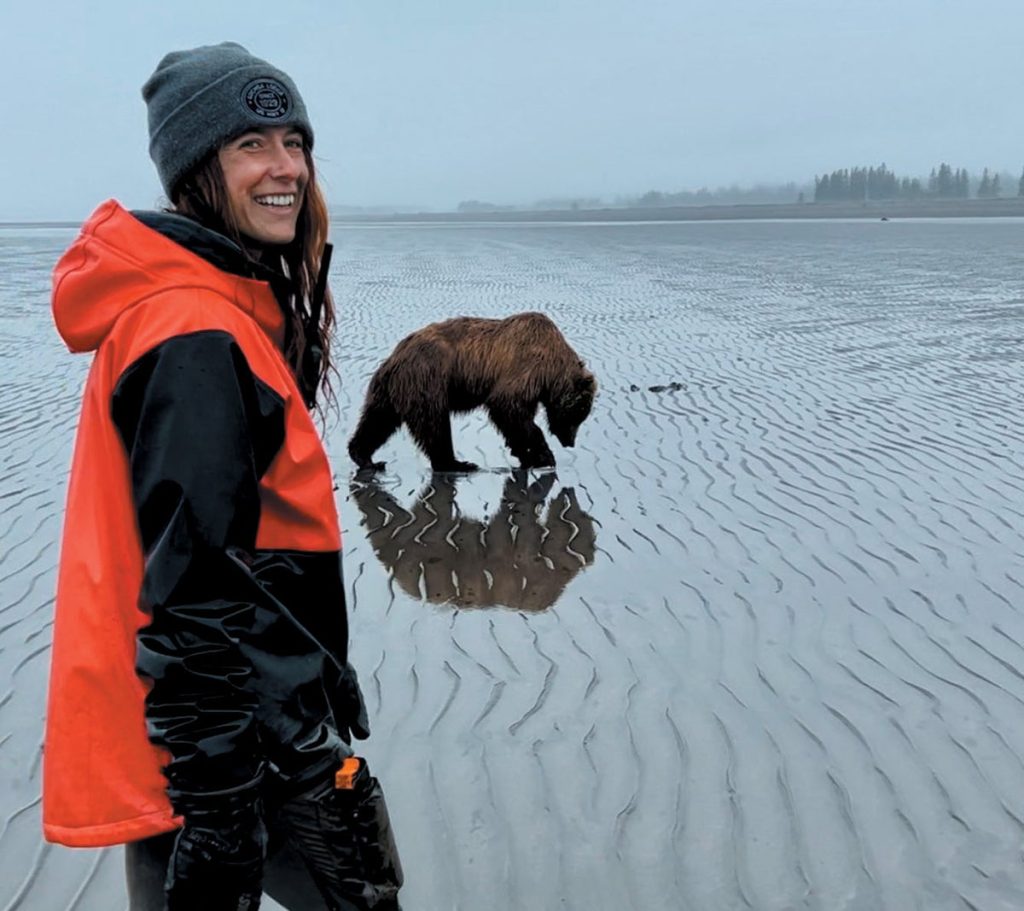Contributors to Scientific American’s June 2024 Issue
Writers, artists, photographers and researchers share the stories behind the stories
Brooke Bartleson
A Grizzly Question
As a teenager in New Jersey, Brooke Bartleson encountered a black bear and her two cubs while running along the side of a road. She was petrified, until a driver in a pickup truck pulled over and assured her that the mama bear did not seem agitated. Then he gave her a can of bear spray. That experience turned Bartleson into a bear aficionado, which led to a career in wildlife photography. “Bears are like the chocolate cake—they’re the dessert that I want really badly,” she says. “And the photography is the spoon to bring it into my mouth.”
Bartleson is constantly on the move in her “super retro” RV, but she often stays near Lake Clark National Park. There her ursine neighbors have an abundance of food in the natural environment—“like a buffet at the Ritz Carlton”—making them more relaxed than populations in other regions. These circumstances allow Bartleson to get extraordinarily close to her subjects.
On supporting science journalism
If you’re enjoying this article, consider supporting our award-winning journalism by subscribing. By purchasing a subscription you are helping to ensure the future of impactful stories about the discoveries and ideas shaping our world today.
This issue’s cover story, written by journalist Benjamin Cassidy on a grizzly reintroduction program in Washington State, features some of Bartleson’s favorite photos. She loves all bears but is especially fond of grizzlies, partly because “their habitat is my preferred habitat as well.” Grizzly territory in North America once stretched from the West Coast to the Mississippi River. Now the bears exist mostly in remote areas in Alaska, Canada and pockets of the lower 48. These “aren’t necessarily the habitats they evolved in,” she says, but “they’re making the best out of what they have left.”
Stephanie Pappas
Superheavies
Stephanie Pappas’s home state has an element named in its honor: tennessine, atomic number 117. It’s one of several “superheavy” elements, which don’t exist in nature, and it was first synthesized in 2010 thanks to the contributions of laboratories in the region. For this issue’s feature on these exotic elements, Pappas, a science journalist based in Colorado, explored the frontier of the periodic table to learn how scientists are giving shape to matter that bends the rules of chemistry. “All of this happens at this atomic level. You can’t see any of it; you can’t feel any of it,” she says.
Yet the story of so-called superheavies is about human ingenuity and perseverance just as much as it is about protons and neutrons. So Pappas traveled to Lawrence Berkeley National Laboratory in California, where scientists have been creating these strange, short-lived atoms since the 1960s. In the control room, which “has stuff in there from the ’60s,” she was struck by the history and creativity on display. The researchers were “patching things together and making it work.” They were also “often finishing each other’s sentences,” she says. “You could tell they had been working closely for a while.”
BJ Casey
Treating the Anxious Teen
As a postdoc at the National Institutes of Mental Health in the early 1990s, BJ Casey became one of the first people to have their brain scanned using functional magnetic resonance imaging, or fMRI. The scanning room “looked like an old NASA project,” she recalls. “The magnet was just huge.” Casey volunteered to be a guinea pig because she knew the technology had “tremendous” potential—it allowed neuroscientists to noninvasively observe the brain in action for the first time. Ever since that experience, Casey, who is now a neuroscience professor at Barnard College, has used the technique in her work to understand the adolescent brain.
In this article Casey co-wrote with neuroscientist Heidi Meyer of Boston University, she describes the way changes in how different brain regions talk to one another can make teens more sensitive to threats—and vulnerable to anxiety.
While reading through her own teenage diaries, Casey realized she had no memories of the emotions she had written about so intensely. “There’s so much passion” in adolescence, she says, and adults often forget what this tumultuous yet beautiful time was like. So “just as we tell teens, ‘take a deep breath,’ parents need to do that, too—to [take] a moment and just listen to their child.”
Immy Smith
Graphic Science
Every other day Immy Smith wakes up just after dawn to check the moth trap. The light in their backyard in southern England draws in these insects overnight, and Smith photographs them and logs the finds in a community science database for researchers to use. For this issue’s column, written by senior editor Gary Stix, they illustrated how moths get drawn toward light sources. “It’s the kind of thing you take for granted—that moths fly toward the light,” Smith says. But new research shows that they’re flying orthogonal to the light and getting trapped, and “it’s really fascinating.”
Smith is a pharmacologist as well as an artist, although these days they’re more focused on their art, which has depicted everything from plants to brain tumors—and, of course, insects. As a kid, “I used to bring all of the insects into the house and just unleash them.” While working on a project about lichen symbiosis, Smith learned that many moth species blend in with lichen—such as the Merveille du Jour moth, which is now tattooed on their forearm. “I ended up completely falling in love with moths” and even describes themself as “moths in a human suit.”
These underappreciated four-winged insects aren’t just fun to draw; they’re also important pollinators and a critical food source for many birds. For anyone still on the fence about these creatures, Smith has a message: “If you like birds, you like moths. I don’t make the rules!”

